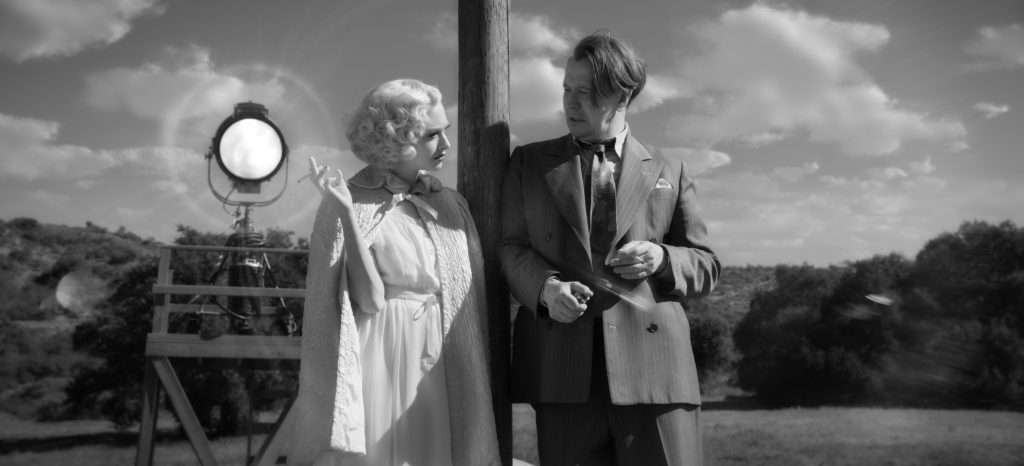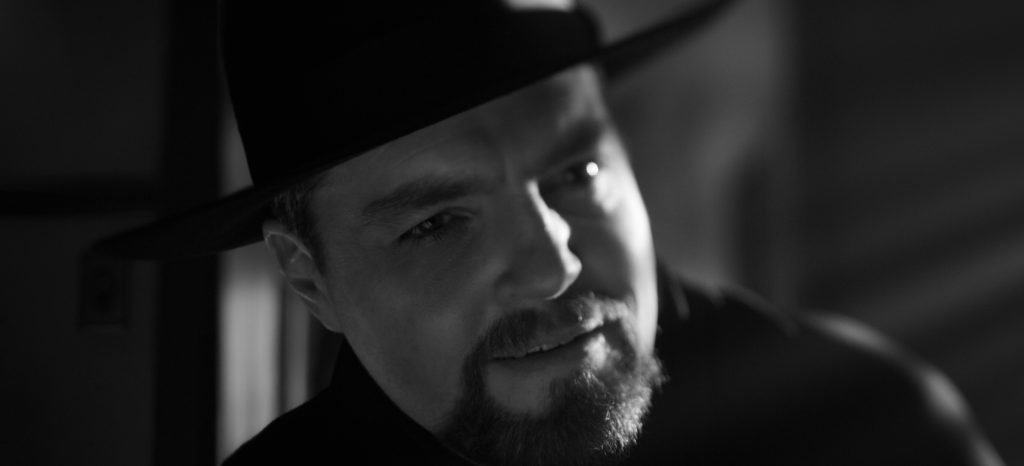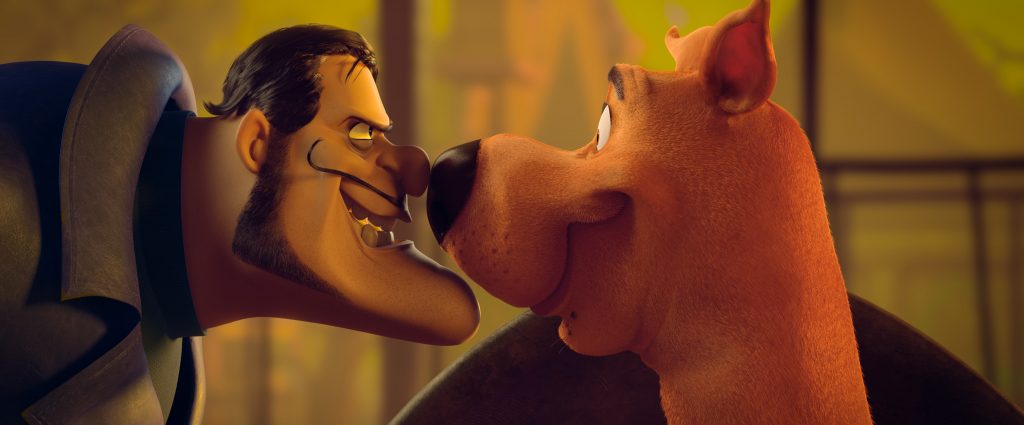October 30, 2021
by Carla Hay

Directed by Amy Koppelman
Culture Representation: Taking place in New York City in the mid-1990s and briefly in the early 2020s, the dramatic film “A Mouthful of Air” features a predominantly white cast of characters (with a few Latinos) representing the working-class and middle-class.
Culture Clash: A children’s book author/illustrator, who has lifelong issues with depression, tries to fight suicidal thoughts after she has given birth to her first child.
Culture Audience: “A Mouthful of Air” will appeal primarily to people who want to see tearjerking issues about depression from a female perspective, even if those issues are presented through a very privileged and glossy lens.

Amanda Seyfried’s heartbreaking and complex performance is the main reason to see the depressing drama “A Mouthful of Air,” which at times gets a little too trite in this story about a young mother who’s struggling with suicidal thoughts. Although the movie is being described as a story about post-partum depression, viewers learn from watching “A Mouthful of Air” that Seyfried’s Julie Davis character, who’s in her early-to-mid-30s, has been depressed and thinking about committing suicide ever since she was 6 or 7 years old.
“A Mouthful of Air” is the feature-film directorial debut of Amy Koppelman, who is one of the movie’s producers. Koppelman also wrote the screenplay for “A Mouthful of Air,” which is based on her 2003 novel of the same name. In the book, Julie is 26, but Seyfried and Finn Wittrock (who plays Julie’s loving but often-frustrated husband, Ethan Davis) made this movie when they were both in their 30s, and they both look like their real ages. By having actors in their 30s (instead of in their 20s) in these roles, it gives “A Mouthful of Air” a lot more emotional gravitas. People in their mid-20s aren’t expected to have their lives on track and settled as much as people in their mid-30s.
“Settled” might be how someone would describe Julie and Ethan’s domestic life in New York City, where they are living in a comfortably middle-class apartment, sometime in the mid-1990s. “Settled” is not how someone would describe Julie’s state of mind. Julie is a children’s book author/illustrator who works from home, while Ethan works outside the home in an unnamed white-collar business job. The movie never states how long Julie and Ethan have been married, but they’ve recently welcomed their first child into the world: a son named Teddy (played by Olivia Kutz and Christian Kutz), who’s 9 months old when he’s first seen on screen.
Julie seems to be a blissful and loving mother to Teddy in the movie’s opening scene, until it becomes apparent that she’s actually very unhappy. Julie starts off cheerfully feeding her baby and telling Teddy that his cousin Ellie will be coming over soon for a playdate. Gradually, Julie’s sadness begins to show, until she can barely hold back her tears. While Teddy is placed safely in a baby chair, in the living room, with the TV on to distract him, a sorrowful-looking Julie goes into the bathroom and takes out a syringe and begins crying. Does she have a drug problem? Is she about to shoot up with the needle?
The movie doesn’t actually show what happened in the bathroom, but it does reveal that Julie ended up in a hospital because she tried commit suicide by cutting her wrists. A flashback reveals that Julie’s sister-in-law/Ethan’s sister Lucy (played by Jennifer Carpenter) was the one who discovered Julie after this suicide attempt when Lucy came over to visit with her toddler daughter Ellie. Because Julie had been expecting this visit, Julie knew that Lucy would find her soon after making this suicide attempt.
The hospital psychiatrist who meets with Julie is named Dr. Sylvester (played Paul Giamatti), who is compassionate but firm in his ongoing treatment of her. During this first meeting, Dr. Sylvester asks Julie how long she’s been having suicidal thoughts. She tells him that she’s had these on-again/off-again suicidal thoughts since she was in the first grade. This suicide attempt was her first.
It’s soon revealed that Julie has been diagnosed with having anxiety and depression, but she stopped taking her medication for an unspecified period of time before her suicide attempt. It’s a frustrating cycle experienced by people who take medication for mental illnesses. The medication can work, but that leads to the patient thinking that the disease is under control, so the patient often stops taking the medication, which leads to the disease being aggravated all over again.
Julie confides in Dr. Sylvester that part of her anxiety has to do with feeling that she’s a horrible mother. She’s also constantly worried about Teddy getting hurt. This leads Dr. Sylvester to tell her a story about when he was a kid, he heard a widespread false rumor that Bubble Yum bubblegum had spider eggs in it.
Even though he says the rational side of him knows this rumor was debunked years ago, Dr. Sylvester said he had an irrational, knee-jerk reaction to not let his young daughter get Bubble Yum when she picked up a packet of the gum at a store. Dr. Sylvester uses a metaphor when he tells her, “I guess we all need to learn where the spider eggs are. And, perhaps more importantly, where they are not.”
The aftermath of Julie’s suicide attempt is felt and expressed in different ways by her adult family members. Ethan is more determined than ever not to let Julie go off her medication, even though she tries to persuade him that therapy is all she needs to handle her mental illness. Ethan is careful not to scold her or blame her, but the stress of worrying about Julie has taken a toll on their marriage. Julie is very insecure and sometimes accuses Ethan of being disinterested and being emotionally distant with her. In actuality, this could be Ethan’s way of coping with having a paranoid and moody spouse.
Meanwhile, Julie’s mother Bobbi (played by Amy Irving) tries to avoid talking about the suicide attempt when she visits Julie, who is her only child. Bobbi is an upbeat and doting grandmother, but she’s got her own personal issues. Bobbi has never quite gotten over her divorce from her ex-husband Ron (played by Michael Gaston), whom she hopes will reunite with her someday. When Bobbi mentions to Julie that they should have a birthday party for Teddy when he turns a year old, Bobbi also blurts out an ulterior motive for why she wants to have this party: “It would be easier for your father to come back.”
It seems that mental illness runs in Julie’s family. Through conversations and Julie’s flashbacks to when Julie was 8 years old (played by Cate Elefante), it’s revealed that Ron was physically and emotionally abusive to her. In one harrowing flashback, Ron angrily yells and chases after Julie as if he’s about to physically attack her, while Bobbi stands by and says and does nothing. It explains why an adult Julie seems to have a somewhat uneasy relationship with her mother. Bobbi also mentions to an adult Julie that Ron frequently disappears and is unreachable, while Julie somewhat coldly answers, “Maybe he doesn’t want to be found.”
Julie’s unhappy childhood has been haunting her in ways other than her low self-esteem. One of the things that Julie has an irrational fear of is living in a house, probably because houses remind her of her childhood. Ethan has been wanting to move out of their New York City apartment to a house with more space in upstate New York. However, Julie doesn’t like the idea. It’s one of the things that she and Ethan argue about.
One night, after Julie has been discharged from the hospital, she and Ethan decide to spend time at a bar with his sister Lucy and Lucy’s husband Kevin (played by Darren Goldstein), who is a good friend of Ethan’s. It’s one of Julie’s first nights out since the suicide attempt. Julie tries to make pleasant small talk at the table, but Lucy is fuming because Lucy thinks everyone is avoiding talking about the problems caused by Julie’s suicide attempt.
Lucy starts off expressing her irritation that Julie’s problems have to be the center of the family’s attention. Lucy then unleashes her anger at how Julie didn’t properly acknowledge how traumatic it would be for anyone to find her dying after a suicide attempt. It’s a reference to how Julie tried to kill herself with the knowledge that Lucy would be coming over soon to visit. Lucy also bitterly tells Julie that Ethan had to continue to clean up Julie’s blood in the apartment when Julie was recovering in the hospital.
Ethan and Kevin, who were expecting a relaxing night out, don’t think it’s appropriate for Lucy to bring all of these issues up in the conversation, and they try to get her to stop. However, Lucy won’t be silenced. Carpenter’s role as Lucy in “A Mouthful of Air” doesn’t get much screen time, but it’s a pivotal and well-acted performance. Lucy’s rant is the first time that a family member other than Ethan is shown expressing anger at how a family member’s mental illness can cause resentment because of all the time, energy and heartbreak involved in taking care of and worrying about the person with the mental illness.
Julie’s empathetic response to Lucy’s tirade is an indication that Julie isn’t completely self-absorbed. However, because Julie is deeply unhappy and paranoid, she goes back to her familiar patterns of thinking that she’s a loser and that her family would be better off without her. Meanwhile, a visit to her obstetrician/gynecologist Dr. Salzman (played by Josh Hamilton), who knows about her suicide attempt, results in another turn of events for Julie and Ethan.
Julie’s claim to fame as a children’s book author/illustrator is creating a fairy-tale character called Pinky Tinkerbink, a girl who copes with challenges while learning some life lessons. “A Mouthful of Air” has some of Julie’s whimsical drawings (which have a lot of rainbows and clouds) that come to life in animation. When Julie does a book reading to some kindergarten-age kids at their school, she essentially admits that she created the Pinky Tinkerbink character to be the kind of heroic friend that she never had as a child.
Seyfried gives a very emotionally nuanced performance as someone who realistically shows the gamut of what people with mental health struggles often experience. She’s stubborn when she resists taking her medication, but she flip-flops on how much attention (including pity) that she wants from her loved ones for her problems. Julie is neither a saint nor a villain but someone who finds it difficult to get outside of her own head.
Wittrock also gives a believable performance as a spouse whose patience is tested by his wife’s struggles with her mental health. As much as Julie feels inadequate about being a good wife and mother, Ethan feels his own angst about his role in the family, since husbands and fathers often feel like they have to be the biggest protectors of their families. Ethan feels powerless to help Julie in boosting her self-esteem, which can be very difficult for a suicidal person. The power to change must come from within that person, and it’s a lot easier said than done.
And that’s why “A Mouthful of Air” can sometimes veer into superficial platitudes when depicting these serious problems. For example, in a scene where Julie is getting an exam from Dr. Salzman, she tells him how she’s been doing since her suicide attempt. She says, “I was walking through a world that was black and white, and now I’m just starting to see color again.” Who talks like in such a hokey way when discussing their mental illness? It might be excused that Julie talks like that because she’s a children’s book writer, but it’s still a cringworthy line of dialogue.
“A Mouthful of Air” also falls into very familiar tropes of movies about women with post-partum depression issues: These movies are almost always about middle-class or wealthy white women with supportive spouses/partners, thereby ignoring the fact that women from all walks of life can have the same issues too. The focus on this specific demographic of white women who are middle-class or wealthy is probably because filmmakers want to show that even women who seem to have a lot of advantages in life (white privilege, financial stabilty, access to good health care) can still be miserable.
However, it’s a huge blind spot when any movie fails to acknowledge that women from all races and social classes have these mental health struggles too. Julie is never shown doing any group therapy, nor is group therapy is ever suggested to her. And if she has any friends who are not family members, these friends are not shown in the movie at all. “A Mouthful of Air” tacks on a short public-service-announcement type of statement as an epilogue to encourage anyone with these struggles to get help. But it completely ignores that “getting help” and the quality of that help are often determined by someone’s socioeconomic status.
There’s also a “trigger warning” briefly flashed at the beginning of the movie, to let viewers know that the movie might be upsetting to people with the same issues. The filmmakers seem to have the right intentions. “A Mouthful of Air” fortunately does not exploit these issues with explicit scenes of what Julie does to harm herself.
Seyfried’s admirable performance elevates the material, which at times feels overly polished in how it glosses over these very messy issues. The movie’s biggest flaw is that it takes for granted that Julie is someone who has the time, the health insurance and the ideal support system to get the treatment that she needs. “A Mouthful of Air” could have used more of a reality check that depression issues that are worth making a movie about don’t just affect people who have the advantages to get the proper treatment for their depression.
Stage 6 Films released “A Mouthful of Air” in select U.S. cinemas on October 29, 2021.




